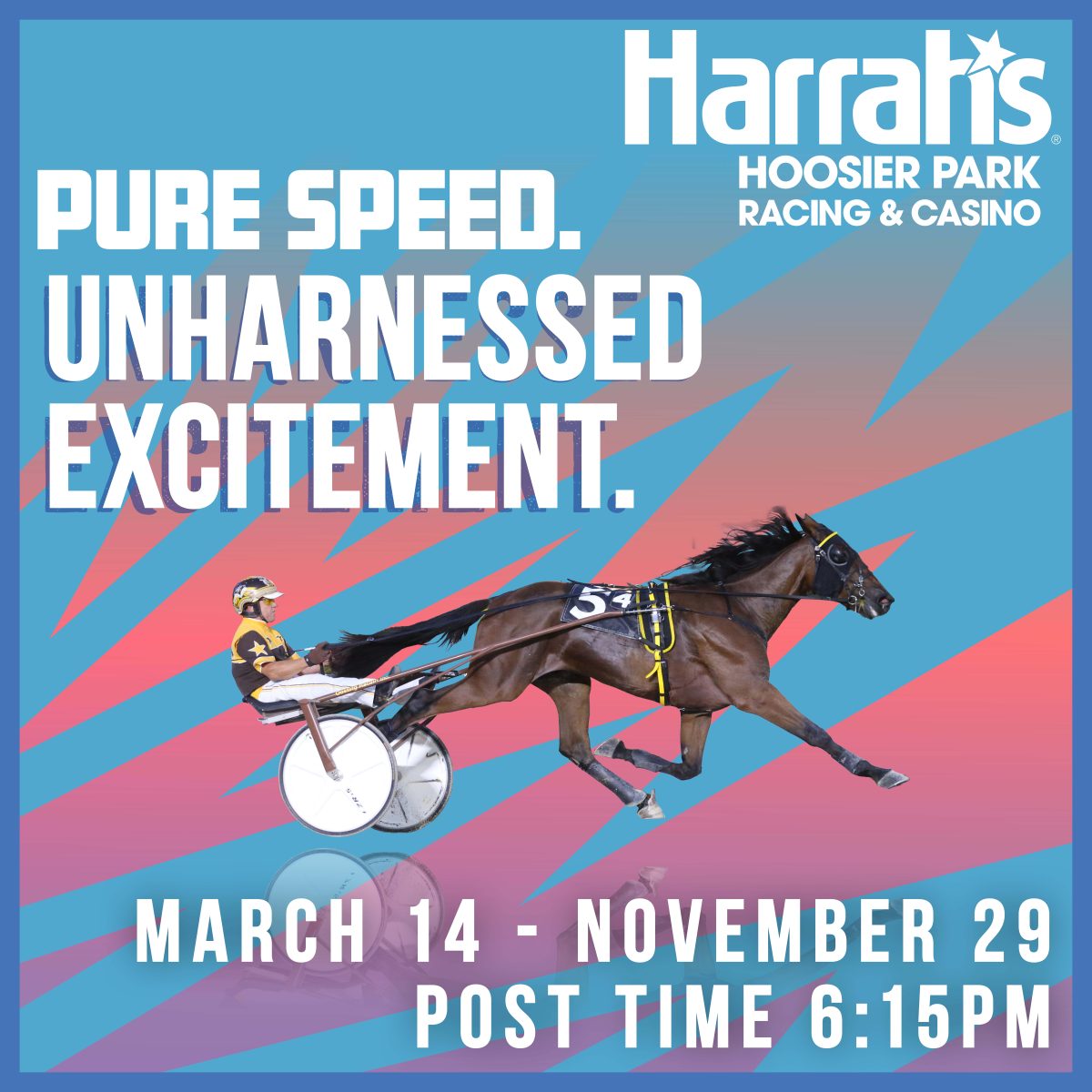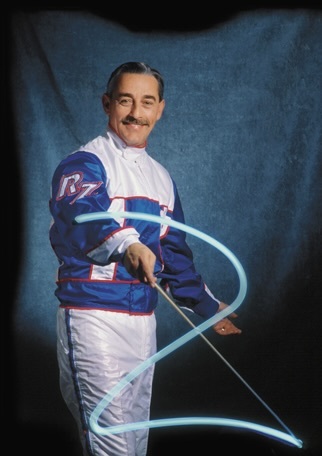Rick Zeron has slowed down slightly, but loves his horses even more
by Murray Brown
There has been 8,177 wins and $103,555,691 in earnings by the horses driven by Rick Zeron since he first made his presence known in the winner’s circle of the Ottawa Valley racetrack of Connaught Park.
Actually, the real numbers are somewhat greater, since the USTA only started keeping those records in 1977. The trainer statistics are far more incomplete, having only been kept since 1991. From that point onward, he is credited with having trained the winners of $28,717,770.
Today at 68, Zeron looks upon himself as being a trainer who occasionally drives a few horses almost entirely from his own stable.
Whereas in the past, he would often be down to drive a half dozen, or even more horses in a given evening, today, it would be somewhat rare for him to drive near that many in a given week.
Would that indicate that Rick “The Whip” has slowed down?
“Perhaps a little, certainly a lot where it relates to driving, but not a great deal where it pertains to training,” he said. “I still have a full draft of 18 head under my care here at Classy Lane Training Centre in Puslinch, a short distance from my home track of Mohawk Raceway. I’m still at the stable seven mornings a week. As much as I’ve loved racing all of my life, I love these horses that I have been privileged to have had put in my care, even more.”
Let’s start with the name. How did you come to be called “The Whip?” You were never what I considered to be what is called a whip man. If anything, from my viewpoint, I would be inclined to label you a driver who, more often than not, relied on the pace of the race and the quality of the opposition to determine how you would drive your horse.
“It began when I was driving at Blue Bonnets in Montreal. Occasionally, after winning a race, I’d be asked for my whip while in the winner’s circle.
“I was usually glad to comply. I suppose that with the passage of time it became somewhat of a trademark. At Blue Bonnets, I was among the few anglophone drivers. I wanted something that would make me stand out. Throwing those whips was that something. I’d estimate, through the years, I’ve probably given away somewhere in the area of 5,000 whips. I moved to Ontario in 1995. I decided I needed something to help me stand out there and hopefully bring attention to myself. That is where and when I started doing the Zorro schtick [by making a ‘Z’ in the air with my whip in the winner’s circle].
“It was designed to bring attention to myself and maybe get me more drives. There’s no doubt that it brought me some notoriety, but looking back, I’m inclined to think that in this game, the only thing that is going to get a driver more drives is success. The more races you win, the more drives you are going to pick up.”
What do you think about being the last of a dying breed, a trainer/driver?
“There are indeed fewer and fewer of us. I suppose it’s because driving is almost entirely a young man’s game. In the same way that the breed has improved and progressed, the same has happened with drivers… In years previous, our horses had all sorts of faults, both physical and in the way they stood and traveled. Nowhere is this more evident than at a horse sale. It used to be that you could eliminate a whole bunch of horses, maybe even the majority of them, due to physical faults. We rarely see the big, coarse yearling nowadays. The breed has become more refined, more athletic and more stable. I don’t remember the last time I saw a curb on a yearling. The same applies to most conformation faults. Our breeders have done a great job in raising their horses.
“In somewhat the same manner, drivers have improved. Gone are the days when you had the big, unathletic lummox sitting behind a horse. That type just cannot compete with today’s drivers. The great drivers of today are all great athletes. They are disciplined. They stay in the best of shape both physically and mentally. They work out. They watch what they eat. The majority of them not only know the horses which they are scheduled to drive, but they also know the ones that they will be racing against and those that will be guiding them. There has never been a time when there has been so much talent available.”
Speaking of youth and today’s top drivers, isn’t there one that you are pretty close to?
“I think that without prejudice, my son Scott is among the half dozen or so best drivers in the world today. With some prejudice, I consider him to be the very best one. It began when Scotty was about 12 years old and he told me that he wanted to become a driver, a great one.
“I told him I would do everything in my power to help him achieve his goal. His mother, my wife, Joyce, had another idea. She told Scott that he had to get a good education first. Then he could become a driver. Between Joyce and myself, we managed to help Scott achieve both goals.
“Scott continued his education and graduated as an accountant, then he worked at becoming a great driver. I am a firm believer that great drivers are born, not made. They have to possess that certain gene in their DNA that enables them to achieve greatness. If they possess that gene, they can hone on that talent and sometime reach their goal.
“In addition to his possessing that gene, Scotty possessed other assets. He is an exceptional horseman and loves horses. He drives with a degree of patience that I do not see with any other driver. It is this patience that has enabled him to win some of his greatest races. He is a great student. He knows the horses he is down to drive as well as those that they are in against and those other drivers that are driving them.
“He is the antithesis of a whipper and slasher. I believe if drivers didn’t carry whips, he’d be as good as he now is, maybe better. Don’t get me wrong, I’m not proposing that we don’t carry whips, I believe them to be necessary for education and guidance.
“I still watch all his races. We still speak every day. Somehow though, our roles have reversed. I used to be the teacher, now I’m the recipient of more knowledge than I impart.
What can you tell us about your greatest equine pupil?
“You are referring to Atlanta of course. As a 2-year-old, Atlanta wasn’t even the best filly we had in the stable. We had two nice ones. Courtney Hanover was the better of the two. When they were in races together, I picked ‘Courtney’ over Atlanta, because she was the better of the two.
“It wasn’t until she was 3 that Atlanta became what we know her as. Courtney Hanover turned out to be what I always believed she was, a very nice filly. She was a stakes winner and ended up earning $229,971. On the other hand, Atlanta became ATLANTA.
“It was not without a little degree of angst that the transition occurred. She was beginning to show the degree of speed that she has ultimately been known for, but she was also making breaks. I believe the turning point was when I put some half hobbles on her. They seemed to steady her. I believe from that point forward she was on her way. We took her to a stakes race at Tioga. She exploded and finished a good third. It was at her next race, a stakes race at Vernon where both Scott and I felt we had something special. Scott told me, ‘We are going to the Hambletonian with this filly.’ ‘You mean the Hambletonian Oaks don’t you?’ I said. ‘No, I mean the Hambletonian,’ he responded.
“The rest is history. In the first heat Scotty said he let her get away from him at the start and she got nipped at the wire. ‘She’ll win the final and the race. She’s the best,’ he said between heats and sure enough she did just that.”
What does your stable look like today?
“As I’ve said, we have 18 in training. I’d like to think that I have a Hambletonian horse among them. His name is Landing On Time. He is the first foal out of Courtney Hanover. Yes, that same Courtney Hanover that was better than Atlanta as a 2-year-old. We sold that mare to Kevin Greenfield and her first foal was this colt. We bought him as a yearling for $80,000.
“Landing On Time was a nice colt last year earning $70,6540. We just qualified him in 1.56. I was very pleased with how he went. The game plan right now is to race him about twice a month. If he looks good enough, we will have him ready for the Hambletonian at The Meadowlands on Aug. 2. He is staked to everything, both before and after the Hambo.
“Of course, it’s a big challenge to expect a lightly raced 2-year-old to be good enough to tackle a field that will likely include one of the very best 2-year-old trotters ever, Maryland. But you never know. We did it once before. Why not again?”



















